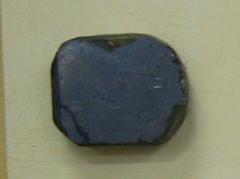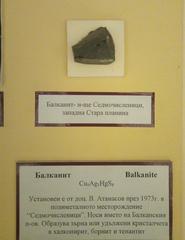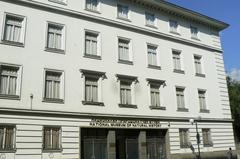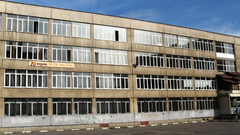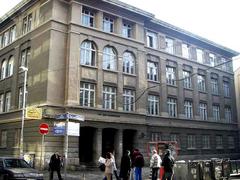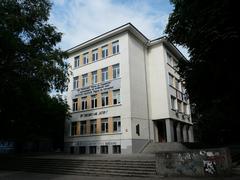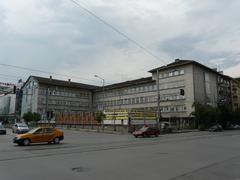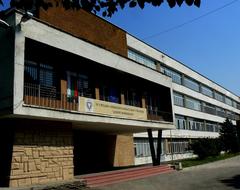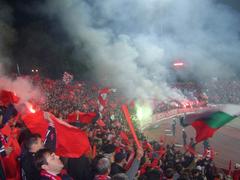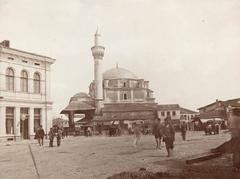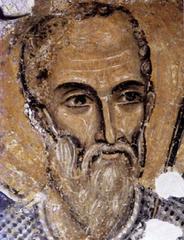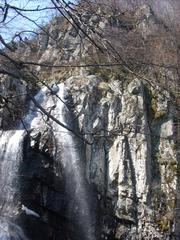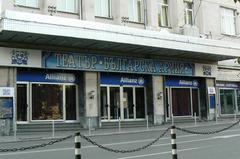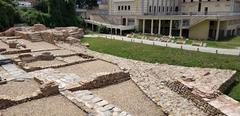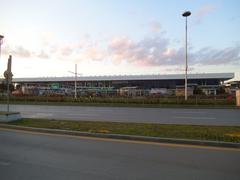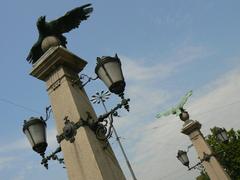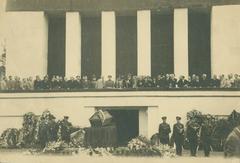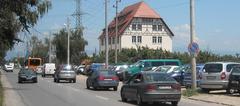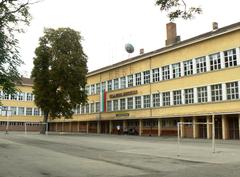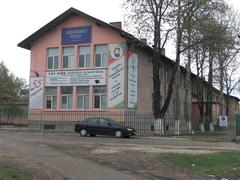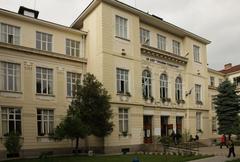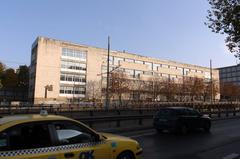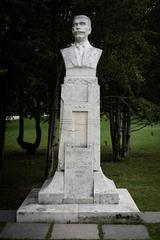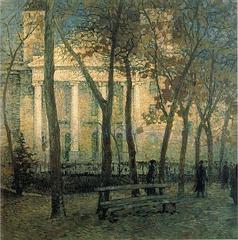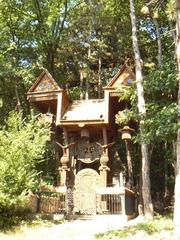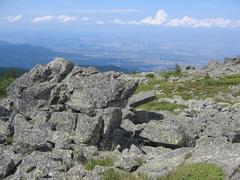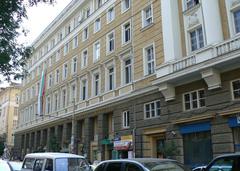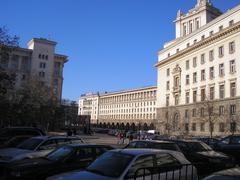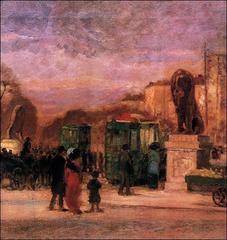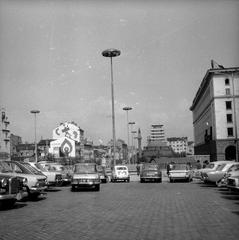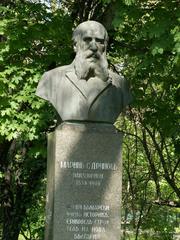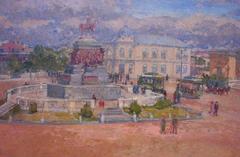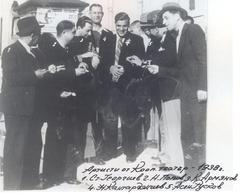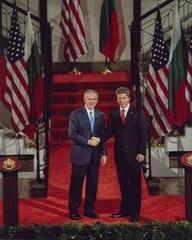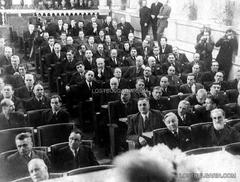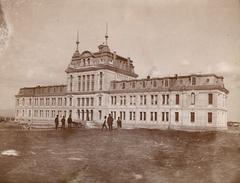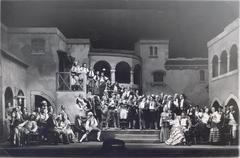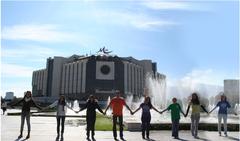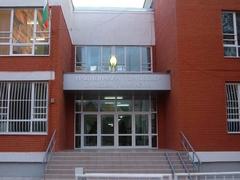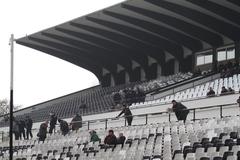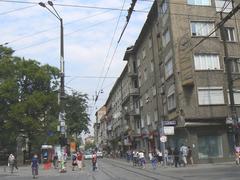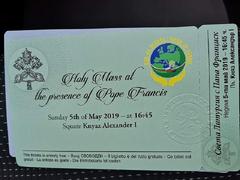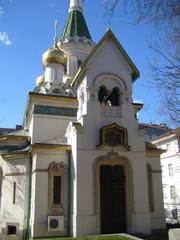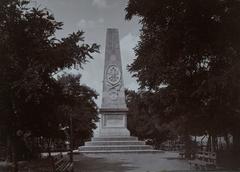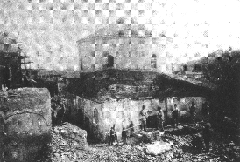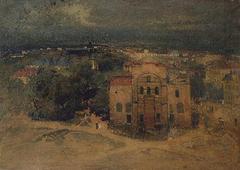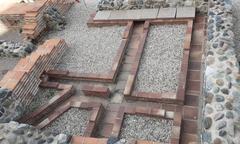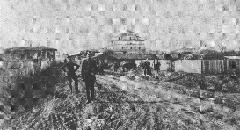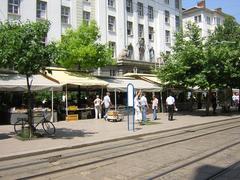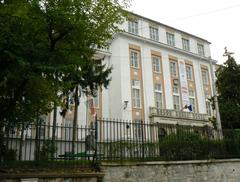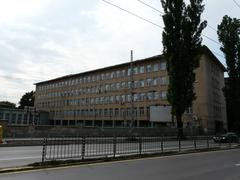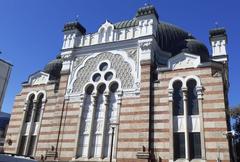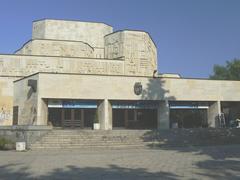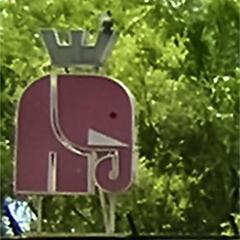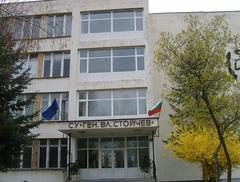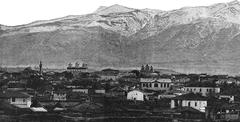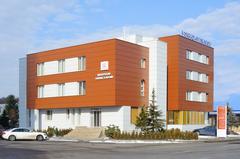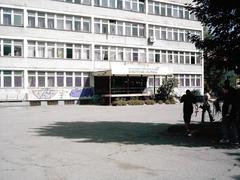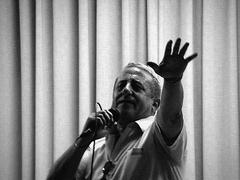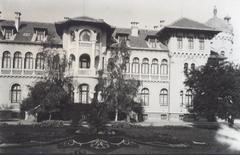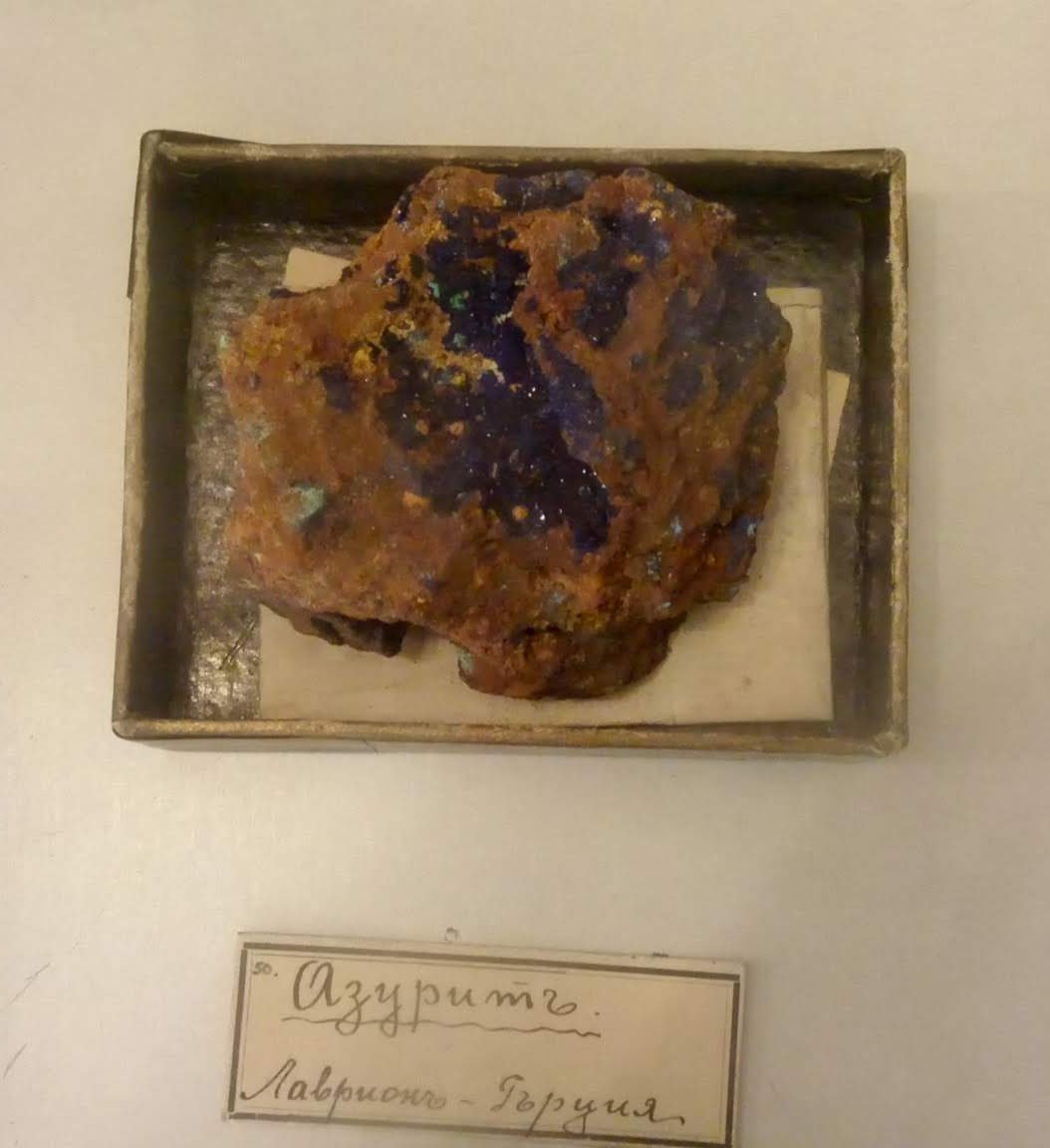
National Museum of Natural History Sofia: Visiting Hours, Tickets, and Travel Guide
Date: 14/06/2025
Introduction
Nestled in the heart of Sofia, the National Museum of Natural History Sofia (NMNHS) stands as Bulgaria’s oldest and most extensive institution dedicated to the natural sciences. Founded in 1889 by Prince Ferdinand of Bulgaria, an enthusiastic naturalist, the museum preserves a remarkable legacy of scientific discovery and public education. Today, it is affiliated with the Bulgarian Academy of Sciences and serves as a vibrant center for research, conservation, and cultural enrichment. Whether you are a student, researcher, family, or traveler, this guide provides all the essential details—visiting hours, ticket prices, accessibility, exhibit highlights, and tips for making the most of your visit to one of Sofia’s premier historical sites. For authoritative updates and additional resources, refer to the Bulgarian Academy of Sciences (BAS) and the Bulgarian Guide.
Table of Contents
- Introduction
- Historical Overview
- Collections and Exhibitions
- Visitor Information
- Scientific and Cultural Significance
- Modernization and Recent Developments
- Frequently Asked Questions (FAQ)
- Conclusion and Final Travel Tips
- References
Historical Overview
Origins and Early Development
The National Museum of Natural History Sofia was established in 1889, drawing upon the personal collections of Prince Ferdinand, who was fascinated with Bulgaria’s flora and fauna. The museum opened its public exhibition in 1907, aligning with European trends in showcasing natural history and the scientific curiosity of the era. Its mission expanded over the decades, and by 1947, it had joined the Bulgarian Academy of Sciences, enhancing its research and educational roles (Wikipedia).
Expansion and Modernization
In 1936, the museum relocated to its present address at 1 Tsar Osvoboditel Blvd, a central location that offers easy access for visitors and situates it near major Sofia landmarks. Over the years, the museum has continually modernized, with major renovations and updates to its permanent exhibitions, such as the 2015 overhaul that integrated contemporary displays and interactive elements (BAS).
Collections and Exhibitions
Exhibition Highlights
The museum boasts over 1.5 million specimens, making it one of the most comprehensive collections in the Balkans (Bulgaria Info Guide). Noteworthy sections include:
- Mineralogy Hall: Over 1,300 mineral samples, including native gold, silver, and newly discovered Bulgarian minerals.
- Paleontology: Features the largest Bulgarian ammonite fossil (1.44 meters, ~84 million years old), along with dinosaur skeletons and prehistoric flora.
- Zoological Halls: Extensive displays of mammals, birds, reptiles, amphibians, and fish from both Bulgaria and around the world. Highlights include the two-meter Rila bear, rare or extinct species like the Caroline parrot, and a wide array of butterflies and beetles.
- Botanical and Marine Life: Dedicated areas for Bulgaria’s native medicinal plants and marine organisms.
Temporary exhibitions and thematic displays are regularly hosted, ensuring the museum’s content stays dynamic and relevant (WhichMuseum).
Visitor Information
Location and Getting There
- Address: 1 Tsar Osvoboditel Blvd, Sofia, Bulgaria
- Nearby Landmarks: Alexander Nevsky Cathedral, National Opera, Saint Sofia Church (The Tourist Checklist)
Public Transport:
- Metro: Serdika station (walking distance)
- Bus: Lines 9, 94, 280, 306 to Sofia University
- Trolleybus: Line 9 (Alexander Nevsky Square), lines 1, 2, 4, 11 (Sofia University)
- Tram: Line 20 (National Opera) (Bulgarian Guide)
Visiting Hours
- Open: Tuesday to Sunday, 9:00 AM – 6:00 PM
- Closed: Mondays and public holidays
- Note: Some sources list opening at 10:00 AM; always check the official website for the latest updates.
Tickets and Admission
- Adults: 6–8 BGN (depending on current rates and exhibition)
- Students/Seniors: 3–4 BGN
- Children under 7: Free
- Family and group discounts: Available
- Purchase: At the museum entrance or online via the official website
Accessibility and Facilities
- Wheelchair Access: Entrance ramps, a mobile platform, and adapted restrooms (Visit Sofia)
- Restrooms: On every floor
- Cloakroom: Available for coats and bags
- Gift Shop: Educational souvenirs, books, and minerals
- No On-site Café: Numerous dining options are nearby
Guided Tours and Special Events
- Guided Tours: Bulgarian and English, bookable in advance
- Special Events: Regular lectures, workshops, and temporary exhibitions. The museum also celebrates International Bat Night and other thematic days (BAS).
Scientific and Cultural Significance
The NMNHS is much more than a museum—it is Bulgaria’s national center for research in biospeleology, vertebrate paleontology, and biodiversity conservation. It is a key partner in national and EU conservation initiatives, including the Red Book of Bulgaria and CITES implementation. The museum’s publication, Historia naturalis bulgarica, and its role in international collaborations underscore its scientific authority (BAS; Wikipedia).
The museum supports educational programs for schools, internships, and doctoral research, making it a hub for academic activity and public engagement.
Modernization and Recent Developments
In recent years, the museum has upgraded its permanent displays, expanded its educational programs, and launched new digital initiatives. Branches like the underground museum at the Basilica of Saint Sofia extend its reach, and international cooperation (e.g., with CETAF and EUROBATS) keeps the institution at the forefront of European science (BAS).
Frequently Asked Questions (FAQ)
Q: What are the National Museum of Natural History Sofia visiting hours?
A: Tuesday–Sunday, 9:00 AM to 6:00 PM; closed Mondays and public holidays.
Q: How much are tickets?
A: Adults: 6–8 BGN; students/seniors: 3–4 BGN; children under 7: free.
Q: Is the museum accessible for people with disabilities?
A: Yes, with ramps, mobile platforms, and adapted restrooms.
Q: Are guided tours available?
A: Yes, in Bulgarian and English—advance booking recommended.
Q: What other Sofia sites are nearby?
A: Alexander Nevsky Cathedral, National Opera, Saint Sofia Church, National Art Gallery.
Q: Is photography allowed?
A: Non-flash photography is generally permitted; check for signs in specific halls.
Conclusion and Final Travel Tips
The National Museum of Natural History Sofia offers a unique window into Bulgaria’s natural wonders and its scientific legacy. From rare fossils and mineral treasures to interactive educational programs, the museum is an ideal destination for families, students, and anyone passionate about the natural world. Its central location, affordable entry, and diverse exhibitions make it a cornerstone of Sofia’s cultural life.
Travel Tips:
- Arrive early (10–11 AM) to avoid crowds.
- Allocate at least 1–2 hours for your visit.
- Combine your museum trip with neighboring Sofia landmarks.
- Download the Audiala app for audio guides and up-to-date visitor information.
- For group visits or special requirements, contact the museum in advance.
Embrace the opportunity to explore Bulgaria’s natural heritage and deepen your appreciation for science, conservation, and culture. For the latest visiting hours, ticket updates, and special event details, consult the official NMNHS website.
References
- National Museum of Natural History Sofia, Bulgarian Academy of Sciences, 2024
- National Museum of Natural History Sofia, Bulgarian Guide, 2024
- National Museum of Natural History Sofia, Wikipedia, 2024
- The Tourist Checklist, Things to Do in Sofia Bulgaria, 2024
- Triphobo, National Museum of Natural History Sofia, 2024
- Welcome.bg, National Museum of Natural History Sofia, 2024

